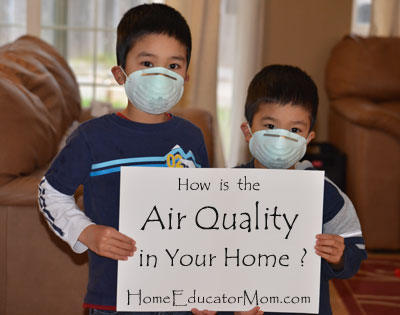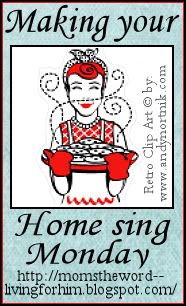“AHHH…For Real…Are you kidding me?” “I’m shock.” “I can not believe this.” “Is this a propaganda?” These and many other terms were going through my mind as I was researching on the toxins and pollutants in a typical home. Can you believe that? I would never believe that my home is a toxic place. If there’s a safe place, it’s my home. A place where I can relax, feel safe, and raise my kids. I am a stay-at-home-mom and I homeschool my kids, so we spend the majority of our time indoors. Not to mention, we live in Oregon where it rains 9 months out of the year, so that does not help either. I am totally bummed and scared about it!
My Findings:
Researchers suggest that indoor air is five times more polluted than outdoor air. In fact, they also suspect that indoor pollution is partly to blame for the rise in asthma, allergies, headaches and respiratory diseases to name a few.
Toxins are lurking around in even seemingly clean houses. I recently learned that indoor pollution can be caused by the furniture made with pressed wood products which gives off formaldehyde from the gluing process. Then there’s also VOC’s in carpets and paint. The list goes on.
How about the cleaning products and air fresheners that you use in your home? Air fresheners contain high levels of chemicals that can accumulate in your lungs. Cleaning products also give off chemicals that are labeled as carcinogenic air pollutants by the Environmental Protection Agency (EPA).
There is Hope:
After reading about all the toxins, I came across an article by Dr. Mercola that gave me tips on how to improve the air quality in my home. Here are his recommendations:
| 1. Increase ventilation by opening a few windows every day for 5 to 10 minutes, preferably on opposite sides of the house.
2. Get some houseplants. Even NASA has found that plants markedly improve the air! Click here for the 10 best pollution-busting houseplants. 3. Take your shoes off as soon as you enter the house, and leave them by the door to prevent tracking in of toxic particles. 4. Discourage tobacco smoking in or around your home. 5. Switch to non-toxic cleaning products (such as baking soda, hydrogen peroxide and vinegar) and safer personal care products. Avoid aerosols. Look for VOC-free cleaners. Avoid commercial air fresheners and scented candles, which can degass literally thousands of different chemicals into your breathing space. 6. Don’t hang dry cleaned clothing in your closet immediately. Hang them outside for a day or two. Better yet, see if there’s an eco-friendly dry cleaner in your city that uses some of the newer dry cleaning technologies, such as liquid CO2. 7. Vacuum and shampoo/mop carpets, rugs, and floors regularly. Every time a person walks across the floor, a whirlwind of irritants is stirred up. 8. Upgrade your furnace filters. Today, there are more elaborate filters that trap more of the particulates. Have your furnace and air conditioning ductwork and chimney cleaned regularly. 9. Avoid storing paints, adhesives, solvents, and other harsh chemicals in your house or in an attached garage. 10. Avoid using nonstick cookware. I now carry my favorite alternative, ceramic cookware, in my store. 11. Ensure your combustion appliances are properly vented. 12. When building or remodeling, opt for safer and more eco-friendly materials. VOC-free paints are becoming easier to find. 13. Opt for sustainable hardwood flooring instead of carpet. Carpet traps a multitude of particles such as pet dander, heavy metals, and all sorts of allergens. If you choose to install carpet, look for one labeled “VOC-free” to avoid toxic outgassing. 14. Make sure your house has proper drainage and its foundation is sealed properly. 15. The same principles apply to ventilation inside your car—especially if your car is new—and chemicals from plastics, solvents, carpet and audio equipment add to the toxic mix in your car’s cabin. That “new car smell” can contain up to 35 times the health limit for VOCs, “making its enjoyment akin to glue-sniffing,” as this article reports. |
By no means is this an all-inclusive article on the toxins and pollutants in your home. I hope this gives you the curiosity to find out more and spur you on to making your home a better place. A place where you can feel and breathe safely.
Related Readings:
INSIDE Your Home: The Ugly Invaders Which Can Make You Sick
Even if You Do Everything Else Right – This Frequently Overlooked Threat can Destroy Your Health
The Inside Story: A Guide to Indoor Air Quality
http://www.webmd.com/health-ehome-9/indoor-air-quality

 Hi, I'm Betty and welcome to Home Educator Mom. Whether you are a homeschooling family or not, we’re all called to be our kids’ first teachers. Our desire here is to encourage moms as we walk this path of training and equipping our children. We hope you will stay a while and join us on this journey: learning and sharing life together. Meet our
Hi, I'm Betty and welcome to Home Educator Mom. Whether you are a homeschooling family or not, we’re all called to be our kids’ first teachers. Our desire here is to encourage moms as we walk this path of training and equipping our children. We hope you will stay a while and join us on this journey: learning and sharing life together. Meet our 










This is a very good article about toxic in the house, but some how we have to remember that a lot of old house built before 1978 also contain a lot of lead in the paint,so please don’t let the kids chew on window sill and funitures. Recently we found a lot of toys and candies came in from other countries also contain lead in it. Make sure don’t let your kids lick them or chew on them, and remember this lead is sweet.
Hi Mr. Tung,
It’s a big concern now a days since you hear so many recalls from the FDA. Thank you for the tidbits about lead poisoning. Blessings!
What GREAT tips- thanks for linking up on the photo friday blog hop!
Hi Deirdre,
Thank you for stopping by. I appreciate your weekly linkup. Blessings to you!
This is an excellent start in learning about inside pollutants found in a home. Thanks so much for sharing this!! I stopped by from The Alabaster Jar today. Nice meeting you!!
Hi Judith,
Thank you for your support. I hope this will spur you on to learning more about pollutants in your home. It’s a pleasure meeting you too!
Hi Betty. Great article and I love that you have made it so practical and user friendly. Thanks for linking up on Winsome wednesday. I look forward to seeing what you have for us next week
God bless
Tracy
Hi Tracy,
Thank you for stopping by to say hello. Blessings to you too!
These are great tips! I have asthma and I know that certain smells will affect my asthma and can cause an attack, so I have to be careful.
Thank you so much for linking up to “Making Your Home Sing Monday!” I hope you’ll join us again. If you DO join us again, I’d love it if you could give a courtesy link back to my blog so that your readers could join us as well, if they wish. Thank you!
Hi Nan,
I hope this info will give you a good start to further your research in this area. Thank you for stopping by.